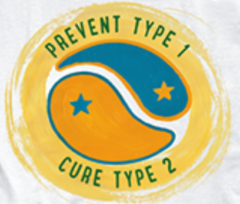The term diabetes came from the ancient Greek word for siphon. It meant that the patient could not retain water. The term was applied to two kinds of patients. Some patients passed urine that was sweet like honey. That condition was called diabetes mellitus, which meant honeyed diabetes. A few patients passed urine that was so watery that it was tasteless. It was called diabetes insipidus.
When people talk about diabetes, they usually mean diabetes mellitus, which is sometimes called sugar diabetes. Some people just call it sugar. The term diabetes mellitus can refer to any of several diseases. Each of them has a different cause. However, they all have one thing in common: they cause a sugar called glucose to build up to abnormally high levels in the bloodstream.
When there is way too much glucose in the blood, some of that glucose starts to leak out through the kidneys, taking water with it. Because of the loss of water, the person gets very thirsty. Because the sugar represents calories, the person loses weight. As a result, people with uncontrolled diabetes mellitus get the following classic signs:
- They pee a lot.
- They get terribly thirsty.
- Their urine contains sugar.
- They lose weight.
- In severe cases, their breath may have a strange, fruity smell.
Anyone who has those symptoms should seek medical attention right away. If left untreated, the most severe form of diabetes rapidly leads to coma and death. Even the milder forms of diabetes can lead to serious complications (such as blindness, gangrene, and death) if poorly managed.
What causes diabetes?
If a person has diabetes, it does not mean that the person has eaten too much sugar and/or starch. (Sugars and starches are carbohydrates. During digestion, starch gets broken down into the sugar called glucose.) In fact, diets that are high in carbohydrate (especially starch) are good for diabetics. Diabetes can result from one of two basic problems (a person can have both problems at the same time):
- Failure of the pancreas to produce enough of a hormone called insulin.
- Resistance to the effects of insulin
There are several kinds of diabetes. Each has its own set of causes.
| Type of diabetes | Cause |
|---|---|
| Type 1 | Failure of the pancreas to produce insulin, usually as a result of the immune system’s attack on the pancreas but sometimes after surgical removal of the pancreas. This attack can be triggered by a protein in cow’s milk. |
| Type 2 | Resistance to the effects of insulin; this resistance is one way in which the body resists gaining more weight from a fattening, fatty diet. |
| Gestational diabetes | Mild insulin resistance is normal during pregnancy; it helps to ensure that plenty of sugar will flow to the growing fetus. When added to the insulin resistance that results from gaining too much weight on a fatty diet, it can result in a temporary case of diabetes. |
| Genetic diabetes | Only a tiny minority of cases of diabetes are truly genetic. These forms of diabetes are sometimes called monogenic diabetes because they result from a mutation in a single gene. The mild forms are called maturity-onset diabetes of the young (MODY). The severe forms are called infantile diabetes. |
What is thin diabetes, and what is fat diabetes?
French-speaking people have no trouble remembering which type of diabetes is which. They use the term diabète maigre, which literally means thin diabetes, to refer to type 1 diabetes. Type 1 diabetes is the severe form of diabetes that usually strikes children, who are typically of normal weight to begin with, and causes rapid weight loss. French-speaking people use the term diabète gras, which literally means fat diabetes to refer to the form of diabetes that results from gaining too much weight on a fattening, fatty diet.
Can diabetes be cured?
Fat diabetes can be cured by a change to a low-fat, high-fiber, high-carbohydrate diet. Unfortunately, thin diabetes cannot yet be cured. To cure thin diabetes, we will need to find some way to regrow the insulin-producing beta cells of the pancreas. However, the diet that cures fat diabetes is also good for people with thin diabetes. It is also good for practically anyone. It reduces the person’s risk of heart attack, many cancers, and many autoimmune diseases, such as arthritis. If a whole family changes its diet to help a diabetic family member, everyone in the family may benefit.
Fat diabetes is not really a disease. If you have fat diabetes, it means that you are a naturally thin person. Your blood sugar is out of control because your body is trying to prevent you from gaining even more weight on a fattening, fatty diet. A diet based on unrefined starches (whole grains and starchy vegetables) plus other vegetables, fruits, and legumes (beans and peas) is the key to curing fat diabetes and avoiding the long-term complications of thin diabetes.
Unfortunately, many people and even many medical doctors believe that fat diabetes results from eating too much sugar and starch. As a result, many doctors tell their diabetic patients to eat a fatty diet, which would make their diabetes worse, not better. Fatty diets also increase the risk of other problems, such as heart and kidney disease, that are already more common in diabetics.

